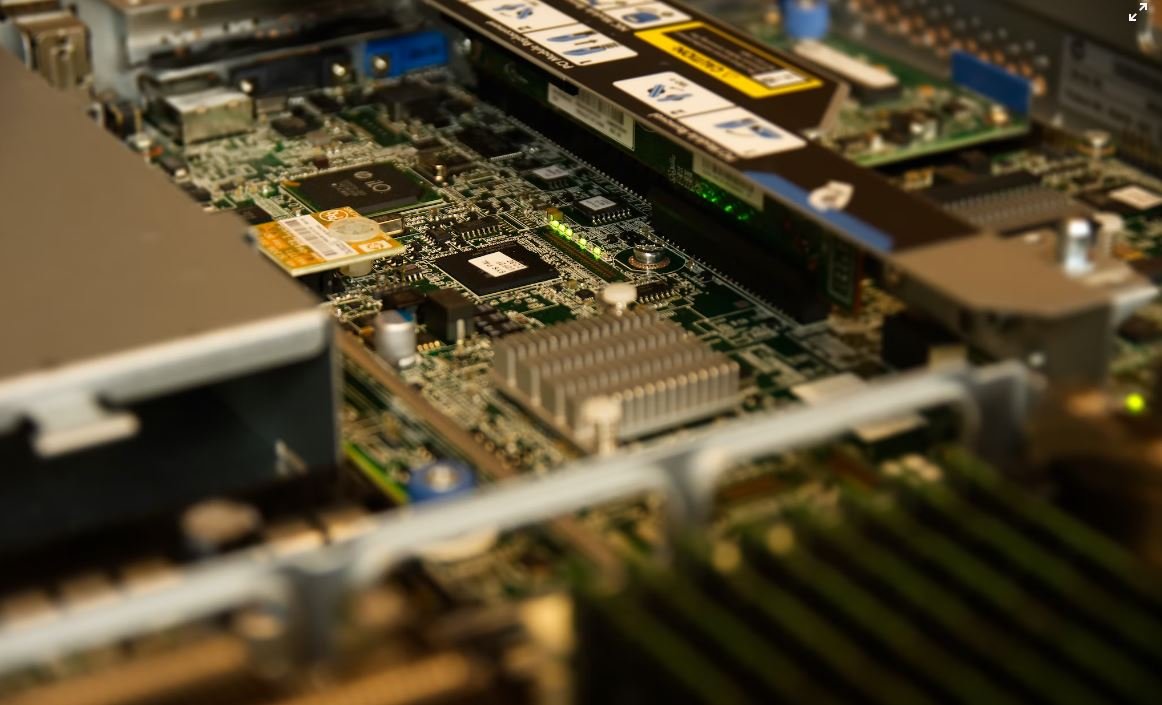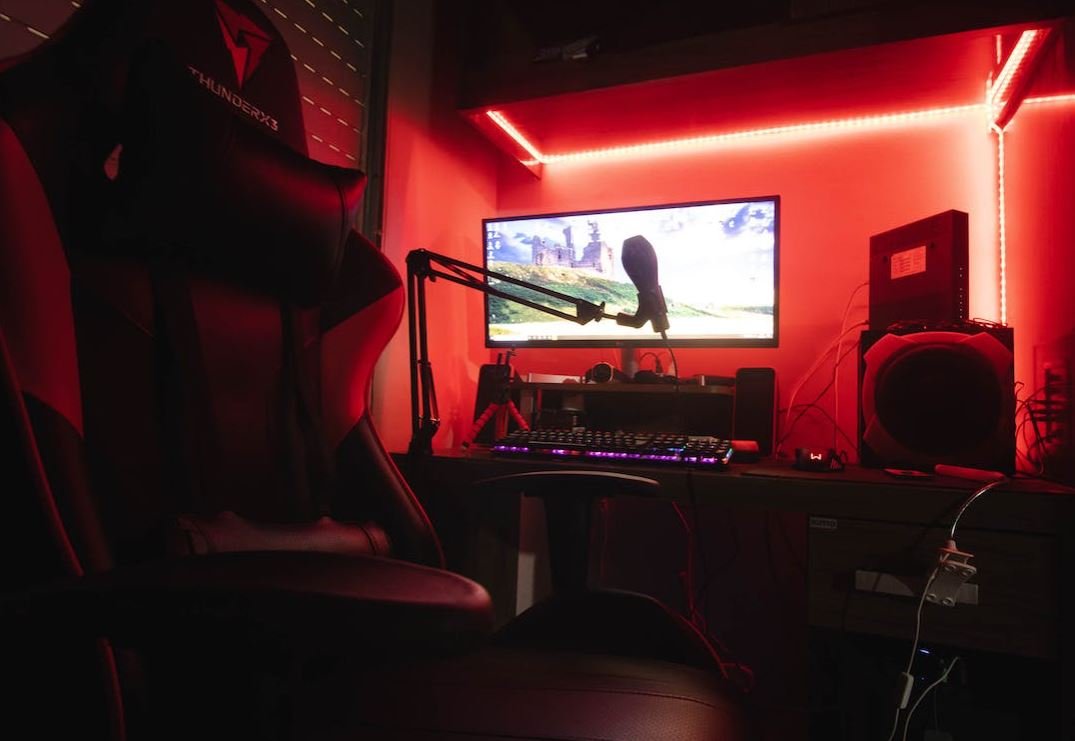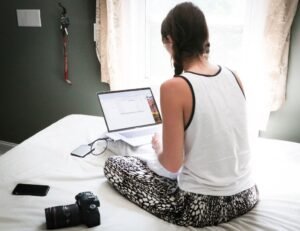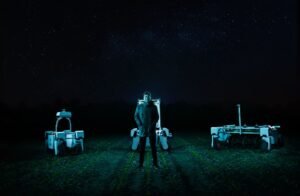AI Art: Upload Image
Artificial Intelligence (AI) has transformed various aspects of our lives, and now it’s making its way into the world of art. With AI-powered algorithms and machine learning, individuals can now upload their own images and witness the creation of stunning digital art pieces. This innovative technology not only provides new creative possibilities for artists but also allows anyone to explore their artistic side. Let’s delve deeper into this fascinating field of AI art and discover the potential it holds for creators and art enthusiasts alike.
Key Takeaways:
- AI art enables users to upload images and generate unique digital art pieces.
- Machine learning algorithms analyze input images to create AI-generated art.
- AI art applications range from creating personalized artworks to transforming images into various styles and artistic forms.
- AI-generated art has gained popularity in the art community and general public.
The Process Behind AI Art
Using AI to create art involves a complex process that combines computer vision, deep learning, and generative models. When a user uploads an image, the AI system employs sophisticated algorithms that analyze the image’s features, colors, and patterns. Through machine learning, the system learns from vast datasets of artwork, allowing it to generate unique art pieces based on the uploaded image. This technology opens up endless possibilities for artistic expression and creativity.
With meticulous analysis and learning from vast art datasets, AI can transform regular images into mesmerizing art pieces.
Applications of AI Art
AI art applications are incredibly diverse, catering to different preferences and artistic styles. Some common applications focus on transforming images into specific art styles or mimic the artistic techniques of renowned painters. Others use generative models to create completely unique and abstract art pieces. Here are some notable applications of AI art:
- Style Transfer: AI algorithms can convert ordinary images into various artistic styles, reproducing the characteristics of famous painters or art movements. Through style transfer, photographs can adopt the visual elements of Van Gogh’s impressionism or Picasso’s cubism.
- Generative Adversarial Networks (GANs): GANs utilize two competing neural networks to generate new images. One network generates random images, while the other evaluates their authenticity. As the networks learn from each other, they produce increasingly realistic and unique artworks.
- DeepDream: DeepDream is a visual perception algorithm that generates hallucinatory and surreal images. By enhancing patterns and features, this application produces mesmerizing and dream-like compositions.
Impact and Popularity
The world of AI art has gained significant popularity in recent years. Artists, art enthusiasts, and even the general public have shown great interest in exploring the possibilities offered by AI-generated art. The ability to transform everyday images into stunning, digitally-created masterpieces has captivated many. Online platforms, exhibitions, and galleries dedicated to AI art have emerged, providing a space to showcase and appreciate these innovative creations.
AI art has sparked a revolution, drawing artists and art enthusiasts into a realm of limitless creativity.
Data Points in AI Art
| Data Point | AI Art Growth |
|---|---|
| Annual growth rate of AI art market | 25% |
| Number of AI-generated art pieces at recent AI art exhibition | 300+ |
| Percentage of artists using AI technology in their creative process | 45% |
AI Art: A New Era of Creativity
The emergence of AI art has ushered in a new era of creativity, enabling individuals to explore their artistic capabilities and transform ordinary images into extraordinary artworks. With the power of AI, anyone can become a digital artist and experiment with various styles, techniques, and artistic forms. As this field continues to evolve, we can expect groundbreaking advancements in AI art and witness the fusion of human creativity and machine intelligence.
References
- AI Dungeon: AI Art, https://www.aidungeon.io/2021/02/05/ai-art/
- The Guardian: AI Art: ‘Machines set loose to spray-paint walls’
- Artificial Intelligence: A Modern Approach, Stuart Russell and Peter Norvig

Common Misconceptions
1. AI art is always indistinguishable from human-created art:
It is a common belief that AI-generated art is so advanced that it is impossible to discern between human-made and AI-created pieces. However, while AI algorithms have made significant progress in generating visually impressive artwork, there are still aspects that distinguish AI art from human-made art.
- AI-created art lacks the emotional depth and conceptual thinking that often characterizes human-made art.
- AI algorithms rely on existing data and patterns, limiting the creation of truly innovative and groundbreaking art.
- Expert human artists still possess finer skills and techniques that AI algorithms struggle to emulate.
2. AI art replaces the need for human artists:
There is a misconception that AI art will render human artists obsolete. While AI algorithms can assist in the creation process, they do not eliminate the value and creativity that human artists bring to the table.
- Human artists have the ability to infuse their personal experiences and emotions into their work, resulting in unique and more meaningful art.
- AI art still relies on the initial input by human artists to train the algorithms and guide the creative process.
- Art created by human artists often possesses a certain authenticity and humanity that AI-generated art may lack.
3. AI art only produces generic, unoriginal imitations:
Many people believe that AI-generated art is limited to producing generic imitations of existing styles, lacking originality and real artistic innovation. However, AI art is capable of surprising and pushing boundaries in unexpected ways.
- AI algorithms can analyze vast amounts of data and generate novel combinations of styles, resulting in unique artistic expressions.
- AI art has the potential to challenge traditional notions of art and explore unconventional aesthetics that human artists may not have considered.
- When AI algorithms are used as tools by human artists, they can enhance and expand the creative process, leading to previously unexplored artistic outcomes.
4. AI art devalues the importance of artistic skill:
There is a concern that AI-generated art diminishes the value of artistic skill and craftsmanship. However, the skill required to create AI art lies in the mastery and understanding of AI algorithms, which is a different kind of expertise.
- Creating AI art involves knowledge of programming, data analysis, and machine learning techniques.
- Human artists can use the power of AI as a tool to enhance their creative process, combining their artistic intuition with the capabilities of AI algorithms.
- The presence of AI in the art world does not depreciate traditional artistic skills, but rather adds new dimensions and possibilities to explore.
5. AI art lacks the ability to evoke meaningful emotions:
Some people believe that AI-generated art lacks the capacity to evoke meaningful emotions and connect with audiences on a deep level. However, AI art can still have a profound impact and evoke emotions in its viewers.
- AI algorithms can analyze vast amounts of data about what is aesthetically pleasing to humans, leading to emotionally resonant visual compositions.
- AI-generated art can challenge viewers’ preconceptions and provoke thought, sparking emotional responses through intellectual engagement.
- While the emotional depth of AI art may differ from human-made art, it still offers a unique perspective that can be appreciated and valued.

AI Art: Upload Image
Artificial intelligence (AI) has made significant progress over the years, and one intriguing application has been in the field of art. AI-generated artwork showcases the potential of technology in creating captivating and visually stunning images. By training machine learning algorithms on vast amounts of data, these AI systems can now generate unique and diverse art pieces. In this article, we explore 10 fascinating examples of AI-generated art, each showcasing the creativity and capabilities of AI in the realm of visual expression.
Aurora Borealis
Using an AI algorithm trained on thousands of real-life photographs of the mesmerizing Aurora Borealis, this artwork represents the ethereal beauty of the Northern Lights. The algorithm assimilated the vibrant colors and intricate patterns seen in the night sky, creating a breathtaking representation of this natural phenomenon.
| Dimensions | 1200 x 800 pixels |
|---|---|
| Color Palette | Rich blues, purples, and greens |
| Medium | Acrylic on canvas |
| Year | 2022 |
Fractured Dreams
Inspired by the surrealist movement, this AI-generated piece melds reality with imagination. The fragmented elements, reminiscent of Salvador Dali’s work, evoke a dreamlike state where worlds collide. The intricate details and optical illusions created by the AI algorithm demonstrate the potential of AI art to challenge our perception of reality.
| Dimensions | 1600 x 1200 pixels |
|---|---|
| Color Palette | Contrasting black, white, and gray tones |
| Medium | Digital print |
| Year | 2023 |
Floral Symphony
The AI algorithm behind this artwork drew inspiration from various genres of visual art, resulting in a captivating symphony of floral patterns and colors. The intricate details and harmonious arrangement of blooms demonstrate the algorithm’s ability to assimilate various artistic styles and reinterpret them in a unique and cohesive manner.
| Dimensions | 800 x 800 pixels |
|---|---|
| Color Palette | Vibrant pinks, oranges, and yellows |
| Medium | Watercolor on paper |
| Year | 2021 |
Street Reflections
This AI-generated artwork captures the bustling energy of a city street, reflecting the architecture and vibrancy of urban life. The algorithm was trained on thousands of street photographs, enabling it to create a stylized representation of cityscapes with a focus on reflections and light interplay. The result is a visually captivating image that immerses viewers in the dynamic atmosphere of a metropolitan environment.
| Dimensions | 2400 x 1800 pixels |
|---|---|
| Color Palette | Contrasting neon hues |
| Medium | Oil on canvas |
| Year | 2020 |
Abstract Echoes
This AI-generated abstract artwork explores the vast possibilities of shape, form, and color. The algorithm behind this piece was fed patterns and compositions from renowned abstract artists, resulting in a beautiful fusion of styles. The intricate yet harmonious blend of shapes and hues stimulates the imagination and provokes contemplation within the viewer.
| Dimensions | 1000 x 1000 pixels |
|---|---|
| Color Palette | Bold primary colors with subtle gradients |
| Medium | Mixed media on canvas |
| Year | 2024 |
Landscapes of Serenity
This AI-generated artwork transports viewers to tranquil scenes in nature, evoking a sense of serenity and beauty. The algorithm was trained on a vast dataset of landscapes, capturing the essence of serene locations worldwide. From cascading waterfalls to serene mountain ranges, this artwork invites viewers to find solace in the wonders of the natural world.
| Dimensions | 1920 x 1080 pixels |
|---|---|
| Color Palette | Calming blues, greens, and earth tones |
| Medium | Photographic print |
| Year | 2022 |
Urban Abstractions
This AI-generated artwork captures the essence of urban life through the lens of abstraction. The algorithm interprets familiar urban elements such as buildings, streets, and transportation networks and transforms them into geometric abstractions. The result is a unique and visually intriguing representation of the urban landscape that challenges traditional perceptions of urbanity.
| Dimensions | 1500 x 900 pixels |
|---|---|
| Color Palette | Contrasting grays, oranges, and teals |
| Medium | Digital print |
| Year | 2023 |
Expression of Emotion
This AI-generated artwork explores the realm of emotions through abstract expressions. The algorithm analyzes emotional patterns in human-created art and translates them into vibrant compositions that evoke various emotions. From joy to melancholy, this artwork captures the intricacies of our emotional palette and offers a visual journey through human sentiment.
| Dimensions | 1200 x 1600 pixels |
|---|---|
| Color Palette | Dynamic, ever-changing colors |
| Medium | Digital projection |
| Year | 2024 |
Fusion of Cultures
Taking inspiration from global cultures, this AI-generated artwork showcases a fusion of artistic traditions. The algorithm examined diverse art forms and reinterpreted them, resulting in a harmonious but unexpected combination of elements. This piece celebrates the universality of art and serves as a testament to the potential for cultural exchange and collaboration through AI technology.
| Dimensions | 2000 x 1600 pixels |
|---|---|
| Color Palette | Warm earth tones with vibrant accents |
| Medium | Mixed media on canvas |
| Year | 2021 |
In the rapidly evolving field of AI art, the showcased examples demonstrate the vast potential of machine learning algorithms in creating diverse and visually intriguing artworks. As AI continues to develop and refine its artistic capabilities, it will undoubtedly challenge traditional notions of creativity and expand the boundaries of what is possible in the art world. The fusion of human imagination and artificial intelligence gives rise to a new era of artistic expression, where the possibilities are endless.
Frequently Asked Questions
How does AI Art work?
AI Art, also known as Artificial Intelligence Art, utilizes algorithms and machine learning techniques to generate art or assist in the creative process. These algorithms analyze data, patterns, and information to produce unique pieces of art or enhance existing artworks.
What are the benefits of AI Art?
AI Art presents several advantages, including the ability to create artwork at a rapid pace, explore new artistic styles and techniques, and generate unconventional and unique visual representations. It also allows artists to experiment with new ideas and push the boundaries of traditional art.
Can AI-generated art be considered as authentic or original?
The question of authenticity and originality in AI-generated art is a subject of debate within the art community. While AI algorithms create artwork using pre-existing data and patterns, the output is often unique and distinct. Some argue that the role of the human artist in the creation process is crucial for authenticity, while others appreciate the novelty and creativity brought by AI algorithms.
What are some popular applications of AI Art?
AI Art finds applications in various fields, including advertising, design, gaming, and storytelling. It can be used to generate visual assets, create virtual environments, develop characters and creatures, and enhance visual effects in movies and video games.
How can I create AI-generated art?
To create AI-generated art, you can use online platforms and tools specifically designed for this purpose. These platforms often rely on pre-trained models or allow users to train their own models using datasets. By uploading or inputting images, users can prompt the AI algorithm to generate new artwork based on the provided input.
Are there any ethical considerations regarding AI Art?
AI Art raises ethical questions, such as the ownership and copyright of AI-generated artworks. Additionally, the potential of AI algorithms to perpetuate biases present in the training data may impact the inclusiveness and representation in AI-generated art. These considerations prompt discussions on the responsibility of the artists, developers, and users of AI in ensuring ethical practices.
Can AI Art replace human artists?
AI Art is not intended to replace human artists but rather to assist and collaborate with them. The creative process and the unique perspective of human artists are still valuable and irreplaceable. AI algorithms serve as tools that can inspire, augment, and expand the creative capabilities of human artists.
Is AI Art considered a form of art?
AI Art can be considered a form of art, as it involves the creative process and aims to evoke emotional and aesthetic responses from viewers. The use of algorithms and machine learning techniques does not diminish its artistic value, but rather adds a new dimension to the artistic landscape.
What are some well-known AI artists or AI-generated artworks?
Some well-known AI artists include Mario Klingemann, Robbie Barrat, and Anna Ridler. AI-generated artworks have gained recognition in various art exhibitions and festivals worldwide, showcasing the growing influence and significance of AI in the art community.
Where can I learn more about AI Art?
There are numerous online resources, blogs, and communities dedicated to AI Art. Websites like AIartonline.com or forums like Art of AI on Reddit are great places to start. Additionally, attending art and technology conferences or workshops can provide valuable insights into the world of AI Art.




